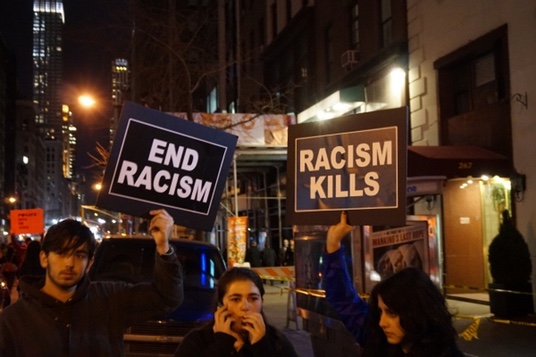
By now it’s abundantly clear that, despite virtually any amount of additional training, many police officers are going to carry their built-in biases with them when they don their uniforms, holster their weapons and go out into the mean streets of America. While efforts are underway in many police departments across the country to institute yet even more training — in hopes of effectively preventing officers from performing their duties in a manner tainted by their biases — ample evidence suggests that we are a long way from achieving that goal, if indeed that’s ever possible.
The simple truth is, all of us have biases; they are part of the human condition. They can be as innocuous as preferring cherry over apple pie, or as onerous as hiring one person over another based on skin color or sexual orientation. But even onerous biases — while despicable when acted upon — usually don’t result in someone’s death.
The problem, however, with biases in the ranks of police officers is they can — and often do — result in unnecessary loss of life; and all too often the life of an innocent, unarmed individual.
Numerous scientifically recognized controlled simulation studies have proven that white cops react more quickly with the use of deadly force when confronted with a black suspect, as opposed to when the suspect is white in the exact same situation. Additionally, other studies have shown that white cops perceive black youth to be, on average, four years older than they actually are, thus, in their minds, making them more dangerous and therefore more of a threat. Sadly, these embedded notions — these biases — are part of the racial baggage many white Americans are freighted down with, and many more are attempting to rid themselves of.
Such a bias no doubt played a role in the killing of Tamir Rice.
The absolute, indisputable facts are these: Ohio is an “open carry” state in terms of firearms, meaning that it’s completely legal for a licensed individual to carry a weapon in plain sight; secondly, Timothy Loehmann, the cop that fired the fatal shot that killed the 12-year-old, has stated for the record that he thought Tamir was an adult.
So, in the absence of witnessing any crime being committed Tamir, why did Loehmann immediately open fire and kill the child, instead of ascertaining whether he had a permit to openly carry the gun that was tucked in his waistband? I submit that it was Loehmann’s built-in bias, his seeing what he thought was a black adult with a gun and immediately concluding, based on nothing but skin color, that the child posed a threat, thus causing him to fire his weapon in under two seconds. I further submit that had Tamir been white, he would have been given the benefit of the doubt by the cop, at least long enough to accurately ascertain if he was a threat or not.
The bald-faced lie that Loehmann and his attorney has repeatedly told — that he yelled for Tamir to drop the gun and show his hands three times — is so incredulous that it’s not worthy of mentioning, except for the fact that even if it were true, how was Tamir suppose to drop the gun without touching it? If Tamir did indeed hear the cop’s commands, when he attempted to comply with them he was shot — and later died.
Again, the question has to be, what law was Tamir breaking? That question remains unanswered. Or, did he die simply because he was young and black?
So the issue becomes one of how to control for the biases white cops bring to the job with them everyday. Parts of the difficulty in answering that question lies in the fact that most white cops will vehemently deny they harbor such biases. And they often are schooled in the art of hiding their true feelings regarding persons of color. The situation is akin to an alcoholic being in denial. It’s virtually impossible to correct a problem without the person who has it admitting to the fact there is a problem in the first place.
Which begs the question: How can protocols and training be developed to control for biases among white cops? I’m not a psychologist; I simply don’t know. To quote Winston Churchill, “It’s a riddle, wrapped in a mystery, inside an enigma.” But it’s one that nonetheless must be solved, since so many black lives depend on changing how America is policed.

From Cool Cleveland correspondent Mansfield B. Frazier mansfieldfATgmail.com. Frazier’s From Behind The Wall: Commentary on Crime, Punishment, Race and the Underclass by a Prison Inmate is available again in hardback. Snag your copy and have it signed by the author by visiting http://NeighborhoodSolutionsInc.com.